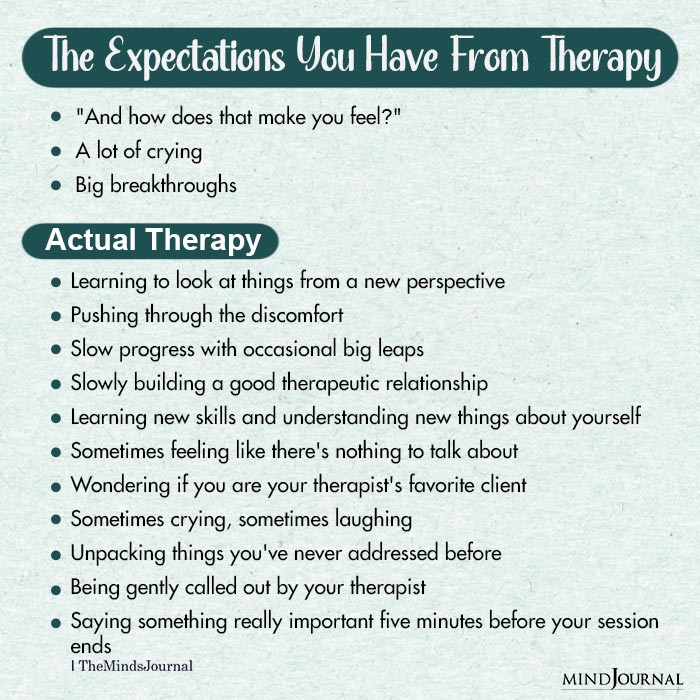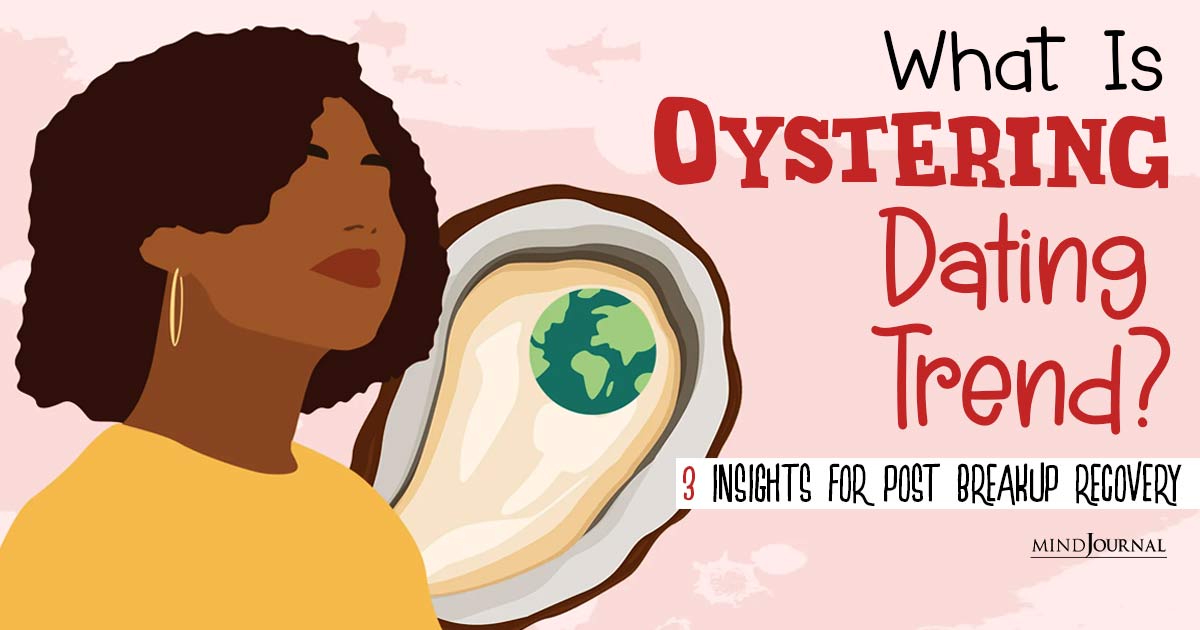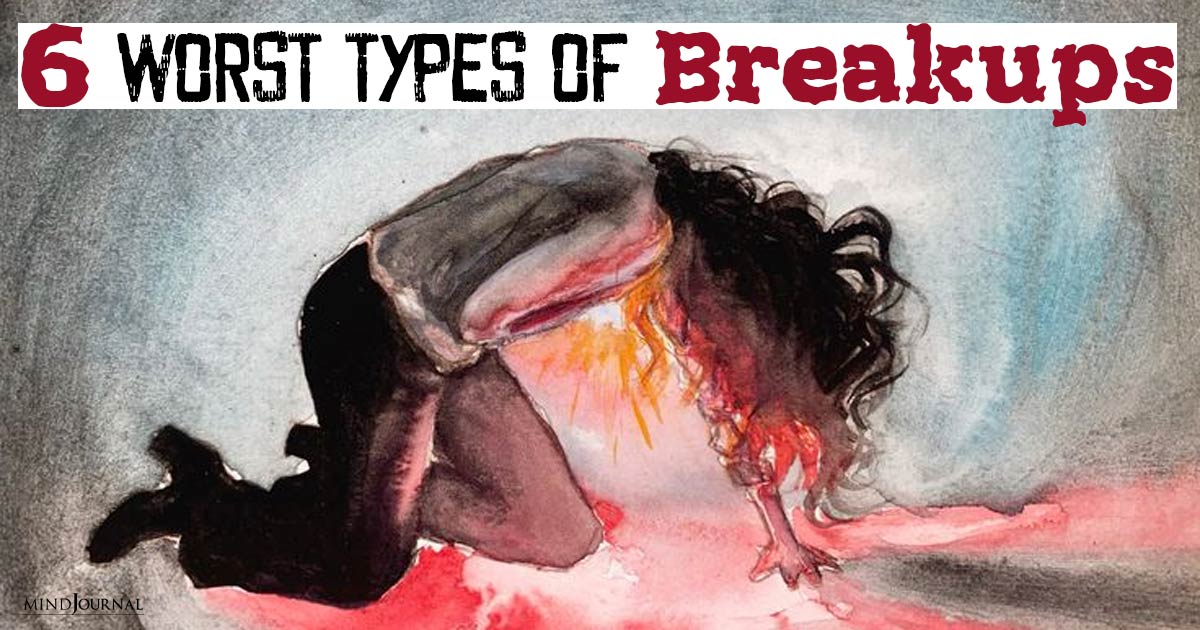Do you experience frequent conflicts in your relationship? Do you feel an emotional disconnection with your partner? Then maybe imago relationship therapy can help you heal from past trauma and avoid triggers to build a more positive relationship with your partner.
What is imago relationship therapy (IRT)?
Imago Relationship Therapy (IRT), commonly known as Imago therapy, is a form of couples therapy that aims to help couples deepen their connection, increase their intimacy, and resolve conflicts by helping them understand and communicate with each other more effectively.
Imago is a Latin word meaning “image”. It is believed that in IRT, the term imago refers to an “unconscious image of familiar love.” It is a concept of idealized and unconscious notion of familiar affection that we develop during our childhood and this concept of love remains intact even in our adulthood.
Related: Couples Therapy: How A Relationship Is Like Dieting
How IRT works
At the heart of IRT is the concept of the “Imago,” which refers to the unconscious image of our ideal partner that we carry within us. This image is formed in childhood based on the relationship we had with our primary caregivers, and it shapes our expectations and desires in romantic relationships.
According to IRT, we are drawn to partners who reflect both the positive and negative aspects of our Imago, and our conflicts with our partner are often a result of unresolved issues from our past.
IRT was developed mainly based on our initial interactions with our parents or other caregivers during our childhood. As children develop their own individualized concept of love, they will likely develop certain thought and behavior patterns to gain love and affection or to survive and stay safe, either by inhibiting or openly expressing themselves & their personality traits.

However, as most parents are often unable to meet their child’s every single need, whether intentionally or unintentionally, the child will develop both negative and positive behaviors which relate to their notion of ideal, familiar love. In adulthood, we seek romantic partners and relationships that fit into our imago or “unconscious image of familiar love” where we may express our inhibited selves.
IRT allows individuals to identify their ‘imago’ so that they can reduce misunderstandings, arguments and conflict in their relationships as adults and develop strategies to communicate and connect openly. The purpose of imago therapy is to overcome negative patterns of behaviors and reactions and interact in a more empathetic and understanding manner.
Imago couples therapy is typically conducted over several sessions with a trained therapist, who helps the couple to develop a deeper connection and work through any issues that may be impacting their relationship.
Origin of imago relationship therapy
Imago Relationship Therapy was co-developed by psychotherapist Harville Hendrix, PhD and his wife Helen LaKelly Hunt, PhD. in the 1980s. Both Hendrix and Hunt had backgrounds in psychology and were experiencing difficulties in their own marriage, which led them to explore different approaches to therapy.
Hendrix drew on his experience as a therapist and researcher to develop a model of couples therapy that was based on the idea that we choose partners who reflect both the positive and negative qualities of our primary caregivers. He believed that the conflicts that arise in our relationships are often rooted in unresolved childhood wounds.
Hendrix and Hunt refined this model over several years, and the technique was eventually popularized as a form of couples counseling in the New York Times best seller “Getting the Love You Want: A Guide for Couples” by Dr. Harville Hendrix and Dr. Helen LaKelly Hunt.
Since then, Imago Therapy has been embraced by many therapists and couples around the world, and has been adapted for use in a variety of settings, including individual therapy, family therapy, and group therapy.
It is recognized as a powerful tool for helping couples to deepen their connection and resolve conflicts by communicating with each other more effectively.
Related: 3 Fights That Signal It’s Time You Need Couples Therapy
5 core principles of IRT
Imago relationship therapy includes of 5 basic tenets that govern the technique –
- Imagining your partner as a wounded child to reframe your perception of them
- Rekindling the romance in your marriage or romantic relationship through gestures like giving gifts, surprising each other, showing affection and expressing gratitude
- Transforming complaints into requests to reframe any frustrations or disappointments
- Working through feelings of anger to reach a resolution
- Reframing your relationship as a source of happiness, fulfillment, and safety to envision a more positive future together
Benefits of imago relationship therapy
Here are some of the most common, potential benefits of IRT:
- Increased understanding of unconscious beliefs and patterns that drive relationship behaviors
- Improved communication skills, including listening, expressing needs, and understanding the perspective of others
- Greater empathy and understanding for one’s partner or family members
- Increased feelings of connection and intimacy in relationships
- Greater self-awareness and insight into one’s own needs and desires
- Ability to recognize and overcome destructive relationship patterns and behaviors
- Development of new skills and strategies for building stronger and more fulfilling connections with others
- Reduction in negative relationship behaviors, such as criticism, defensiveness, and stonewalling
- Improved conflict resolution skills
- Enhancement of overall relationship satisfaction and happiness.
Types of imago therapy
While most people believe that imago therapy is primarily used only for couples, there are different types of IRT that can help with different aspects of life and relationships. Here are some of the common types of this IRT –
1. Couples therapy
The most common form of Imago Therapy is couples therapy, as this therapeutic approach focuses on helping romantic partners build a stronger connection by understanding and addressing the unconscious dynamics that drive their relationship patterns.
It involves working directly with a therapist to identify and address the underlying issues that are causing conflict in the relationship. The therapist will use various techniques to help the couple communicate more effectively, understand each other’s perspectives, and work through any unresolved childhood wounds that may be impacting the relationship.
IRT uses a variety of techniques to help couples explore and understand their Imago and the dynamics that drive their relationship. Couples are encouraged to share their feelings and experiences in a safe and supportive environment, and to learn active listening and communication skills that can help them express themselves more effectively. They may also be asked to participate in exercises or rituals designed to deepen their connection and build empathy and understanding.
One of the key goals of IRT is to help couples move from a state of “disconnection” to a state of “connection.” This involves recognizing and addressing the barriers to intimacy and developing new ways of relating to each other that promote mutual support, respect, and understanding. Through this process, couples can learn to see their partner in a new light and to appreciate their unique strengths and qualities.
IRT has been shown to be effective for couples of all ages and stages of life, and can be particularly helpful for couples struggling with communication issues, trust and intimacy problems, and unresolved past traumas.
Related: 10 Commandments for Partners in Couple’s Therapy

2. Individual therapy
Imago Relationship Therapy (IRT) can also be used as an effective form of therapy for individuals who are seeking to improve their relationships with themselves and others. It can help you better understand your past experiences and how they may be impacting your relationships. By working through these issues in therapy, individuals can develop a greater sense of self-awareness and learn new strategies for building healthier relationships.
In individual therapy, the focus is on exploring the individual’s Imago and how it influences their relationships. The therapist helps the individual to identify the unconscious beliefs and patterns and understand how these patterns may be contributing to their current struggles.
Through IRT, individuals can learn to –
- Develop greater self-awareness and self-compassion
- Identify and heal the wounds from their past
- New communication and relationship skills
- Build stronger and more fulfilling connections with others
One of the key techniques used in IRT for individuals is called “dialogue,” which involves exploring and expressing one’s feelings and experiences in a safe and supportive environment. Through dialogue, individuals can gain a deeper understanding of their own needs and desires, and learn to express them more effectively in their relationships.
IRT can be particularly helpful for individuals who are struggling with issues such as codependency, trust and intimacy problems, and unresolved past traumas.
3. Group therapy
Imago workshops and group therapy sessions are designed to help couples and individuals learn more about themselves and their relationships in a supportive, non-judgmental environment. These sessions typically involve group discussions, experiential exercises, and guided meditations.
In a group setting, participants can share their experiences and insights with one another, and provide support and feedback as they work to overcome their relationship challenges. Group members can also learn from one another’s experiences, and gain new perspectives and insights that can help them grow and develop in their relationships.
4. Family therapy
IRT can also be used as a form of family therapy, helping families to build stronger and more fulfilling relationships with one another. In family therapy, the focus is on understanding the underlying patterns of behavior that contribute to the family’s difficulties.
IRT family therapy can be particularly helpful for families struggling with issues such as communication problems, conflict, and unresolved past traumas. By helping families to address the underlying dynamics that drive their relationships, IRT can help them build stronger and more fulfilling connections with one another, and improve their family dynamic.
Steps in imago relationship therapy
IRT involves a structured approach to exploring and improving relationships. Here are the basic imago therapy steps that you should know about –
1. Identifying the Imago
The first step in IRT involves identifying each partner’s “Imago,” or the unconscious image or pattern of traits they are drawn to in a partner. This helps each partner understand why they are attracted to one another and what they are seeking in a relationship.
Related: How Do I Know If a Therapist is Right For Me? 10 Signs
2. Dialogue
IRT involves a specific form of communication called “dialogue.” This involves actively listening to one’s partner and expressing oneself in a non-judgmental and respectful way. During dialogue, partners take turns speaking and listening, with the goal of building greater understanding and empathy for one another.
3. Exploration of childhood wounds
IRT recognizes that many relationship patterns and behaviors are rooted in childhood experiences and wounds. Through exploration of these wounds, partners can gain greater insight into how their past has impacted their current relationship dynamics.
4. Becoming a conscious couple
IRT aims to help couples become “conscious,” or aware of the patterns and dynamics that drive their behavior in relationships. By recognizing and understanding these patterns, couples can begin to make more intentional choices and build healthier, more fulfilling relationships.
5. Relationship skills building
IRT also involves building specific skills and strategies for improving communication, managing conflict, and building intimacy in relationships. This may involve practicing new communication techniques, setting boundaries, or developing shared goals and values.

Imago therapy techniques
Imago relationship therapy utilizes several key techniques to improve communication and understanding between partners. Here’s a closer look at three of the main techniques used in IRT:
1. Mirroring
Mirroring involves repeating back what one’s partner has said, to ensure that one has understood them correctly. This technique helps to build empathy and understanding between partners by showing that one is truly listening and interested in their partner’s perspective.
To use mirroring, one might say something like “What I hear you saying is…” or “Let me make sure I understand what you’re saying…“
2. Validating
Validation involves acknowledging and accepting one’s partner’s feelings, even if one does not necessarily agree with them. This technique helps to build trust and safety in the relationship by demonstrating that one’s partner’s emotions are important and worthy of respect.
To use validating, one might say something like “I can understand why you feel that way” or “It makes sense that you would feel that way given what you’ve experienced…”
3. Empathizing
Empathizing involves putting oneself in one’s partner’s shoes and trying to understand their experience from their perspective. This technique helps to build empathy and connection by showing that one cares about and is invested in their partner’s well-being.
To use empathizing, one might say something like “I can imagine how hard that must be for you” or “I can see why that would be frustrating for you…”
Related: 10 Reasons Why People Refuse to Talk to Therapists
These techniques can be incredibly effective in improving communication and understanding between partners. A skilled IRT therapist can help couples learn and practice these techniques in a safe and supportive environment.
Is IRT effective?
So does Imago therapy really work? Well, there is evidence to suggest that imago relationship therapy can be an effective approach for improving relationships. Couples who participate in IRT experience significant improvements in relationship satisfaction and communication skills, and are more likely to report feeling closer and more connected to their partner.
A recent study revealed that imago therapy is more beneficial and helpful than cognitive behavioral therapy (CBT) for couples in boosting positive emotions & tolerance and reducing marital boredom among romantic couples. Further research shows that it can effectively improve the participant’s attitude towards relationships, intimacy and love by regulating experiences developed through early experiences.
According to a 2017 study, after 8 weekly sessions of 1.5 hours per session, “the Imago therapy training program showed a significant effect on maintaining a healthy family and developing a warm and friendly relations between couples.” Apart from building intimacy, IRT can also help to reduce marital burnout and increase marital satisfaction even after the sessions, even though there may be a slight drop after the therapy ends.
Another 2018 study revealed IRT can successfully improve the mental health of romantic couples by empowering them to address their physical, mental and emotional needs as a couple. Researchers have also found that imago therapy can effectively improve communication patterns and reduce negative relationship behaviors among intimate partners.
In fact, couples who participated in IRT reported a significant increase in relationship satisfaction, and were more likely to report feeling closer and more connected to their partner. “Participation in the IRT sessions strongly increased one’s ability to accurately empathize with their partner/spouse,” explains a 2016 study.
However, it is important to note that like any therapy approach, the effectiveness of IRT will depend on the unique needs and circumstances of the individuals or couples involved. It may not work for everyone, and success may depend on factors such as the quality of the therapist-client relationship, the motivation of the participants, and the level of commitment to the therapy process.
Related: Power Dynamics In Relationships: The Meaningful Conversation Most Couples Are Avoiding
Are there any limitations to IRT?
Like any therapy approach, imago relationship therapy (IRT) also has certain potential downsides that we need to consider, such as –
1. Time commitment
IRT requires a significant time commitment, typically involving multiple sessions over a period of several months. This may not be feasible or desirable for everyone.
2. Emotional intensity
IRT involves exploring deep emotional issues and may bring up intense feelings and emotions. This can be difficult for some people to handle, particularly if they have experienced past traumas or have difficulty processing emotions.
3. Potential for triggering
As IRT involves exploring past relationship patterns and behaviors, it may trigger uncomfortable or painful memories or experiences. It’s important for clients to have a strong support system in place and to work with a skilled therapist who can help them navigate these challenges.
4. Effectiveness may vary
Like any therapy approach, IRT may not be effective for everyone. Some individuals may have underlying issues or circumstances that make it difficult for them to engage in the therapy process or to benefit from it.
5. May ignore underlying mental health conditions
IRT is focused on improving relationships and may not address underlying mental health conditions that may be impacting one’s ability to form and maintain healthy relationships.
It’s important for individuals considering IRT to discuss any concerns or questions with a qualified therapist, and to carefully weigh the potential benefits and downsides before starting the therapy process.

A structured approach to happy relationships
Imago Relationship Therapy (IRT) is an effective way to improve relationships. By helping couples become more conscious of their patterns and dynamics, developing new skills for communication and conflict resolution, and exploring childhood wounds, IRT can help couples build stronger, more fulfilling relationships.
While it may not be the right approach for everyone, those struggling with relationship challenges may find that IRT offers a valuable path toward greater understanding, empathy, and intimacy.
Related: 7 Important Conversations Every Couple Needs To Have
Frequently Asked Questions (FAQs):
What is the success rate of Imago therapy?
There is no specific success rate for Imago Relationship Therapy, as success depends on various factors, including the specific issues being addressed and the dedication of the individuals or couples involved in the therapy.
Is Imago therapy only for couples?
While Imago Relationship Therapy is primarily designed for couples, it can also be adapted for use in individual, family, and group therapy settings.
What is the therapist’s role in Imago therapy?
The therapist’s role in Imago Relationship Therapy is to provide a safe and supportive environment, guide clients through the therapeutic process, and teach specific communication and relationship-building skills.










Leave a Reply